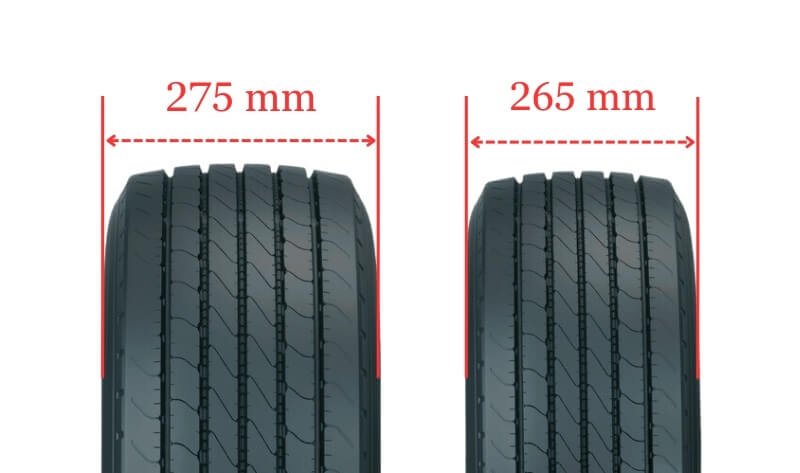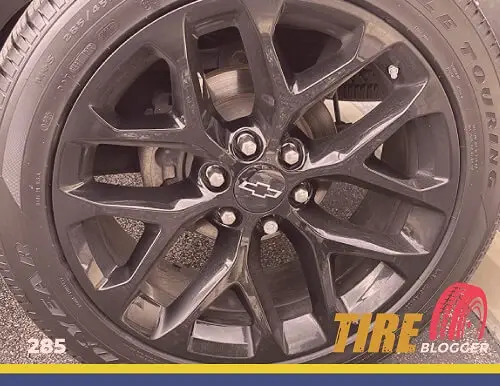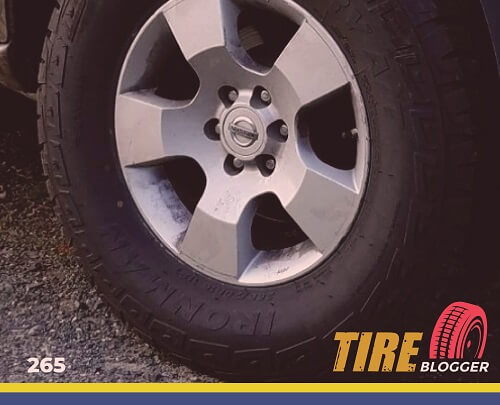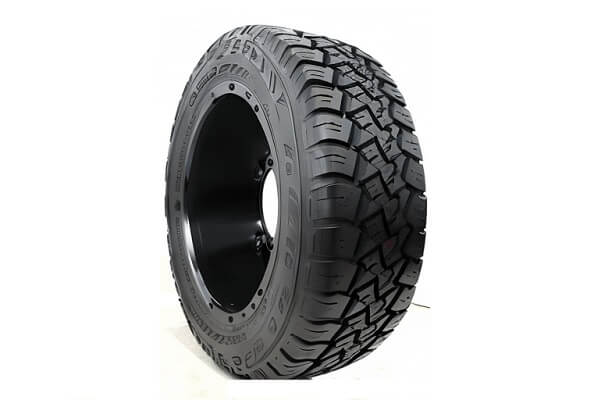265 vs 275 Tires

The main difference between tire sizes 265 and 275 lies in the tread width, with 275 being 10 millimeters (or about 0.4 inches) wider than the 265 tire. This slightly greater width affects factors like ground clearance, fuel efficiency, handling, and more.
265 vs 275 Table
This table offers a simple comparison between two tire sizes, making it easy to differentiate them.
| Tire Size 265 | Tire Size 275 |
|---|---|
| Slightly better fuel efficiency | Marginally more ground clearance |
| Comparable ride comfort | Comparable ride comfort |
| More aesthetically pleasing on some vehicles | Slightly more aggressive aesthetic |
| More responsive handling | Nearly identical handling |
| Similar noise and vibration levels | Slightly better vibration dampening |
| Equivalent durability and treadwear | Equivalent durability and treadwear |
| Similar performance in adverse conditions | Slightly better deep snow/mud traction |
Ground Clearance
The 275 tire provides a bit more ground clearance thanks to its wider tread. This extra clearance can help when driving over rough terrain, obstacles, or steep inclines.
However, the difference is minor, just 10 mm, so both tires offer sufficient clearance for most conditions. The slightly reduced clearance of a 265 tire poses little risk of scrapes or damage.

Gas Mileage
The 265 tire has marginally less rolling resistance with a smaller contact patch, leading to slightly better gas mileage. But the difference is minimal, usually only 1-2 mpg.
For most drivers, fuel efficiency will be very similar between the two sizes. Only those wanting to maximize mpg may notice the 265’s slight advantage.
Ride Comfort
Ride comfort is comparable between the two tire sizes. The 275 absorbs bumps better due to a slightly larger air volume and sidewall.
But the difference is negligible on both smooth and rough roads. Most drivers will notice no discernible variance in ride quality between the two.
Aesthetics Look
Visually, the two tires are nearly identical in appearance. The 275 may look barely more aggressive due to its slightly larger sidewall.
But the difference is subtle and hard to notice unless the tires are examined side-by-side. Either size has an attractive look proportional to most vehicles.

Handling & Stability
Handling is very similar between the 265 and 275, with the 265 providing just a hair quicker steering response due to a smaller contact patch.
But the difference is extremely minor and imperceptible to most drivers. Both offer responsive, stable handling for routine driving needs.
Noise & Vibration
Noise and vibration levels are comparable between the two tire sizes. Neither produces excessive road noise, even at high speeds.
The 275 dampens vibrations slightly better, but most drivers won’t notice a difference in noise or harshness between the two.
Durability & Wear
Durability and treadwear are equivalent to between 265 and 275. They exhibit virtually identical lifespans with similar rubber compounds and construction, with an expected tread life of 40,000-60,000 miles. The 275 may wear slightly more evenly, but overall tread life is the same.

Adverse Conditions
Both tires perform similarly in adverse conditions like rain, snow, and off-road. The wider 275 provides negligible extra traction in deep snow or mud due to its marginally larger footprint.
But the difference is insignificant for most passenger vehicle use. Overall traction is comparable.
Difference Between 265 and 275 Tires
The main difference between 265 and 275 tires is the section width, with 275 tires being 10mm wider than 265 tires. This difference in width can impact various aspects of tire performance and handling.
Can I Use 265 Tires Instead of 275?
Yes, you can use 265 tires instead of 275 tires. The ideal rim width range for 265 tires overlaps with that of 275 tires, making them compatible.
New tires should match current aspect ratio and rim diameter for optimal performance. If mismatched, overall diameter difference must be under 3% to ensure speedometer accuracy.

Can I Use 275 Tires Instead of 265?
Yes, it is possible to use 275 tires instead of 265 tires, as their ideal rim width ranges overlap.
However, keep in mind that the aspect ratio and rim diameter should match your current setup for optimal performance. If different, overall diameter shouldn’t vary beyond 3%.
Can I Put 265 Tires on 275 Rims
Yes, you can put 265 tires on rims designed for 275 tires. The ideal rim width range for 275 tires (8.5-10.0 inches) overlaps with the range for 265 tires (8.0-9.5 inches), ensuring proper fitment.
Can I Put 275 Tires on 265 Rims
Yes, you can put 275 tires on rims designed for 265 tires. The ideal rim width range for 265 tires (8.0-9.5 inches) overlaps with the range for 275 tires (8.5-10.0 inches), allowing for a proper fit.

Meet Caitlin McCormack, a Tire Size Expert and Blogger Passionate About Everything Related to Tires. With Years of Experience in the Tire Industry, Caitlin Has Become an Expert in Tire Sizes and Their Impact on Vehicle Performance.
